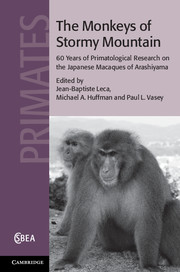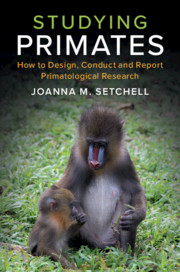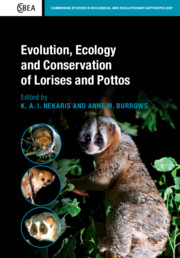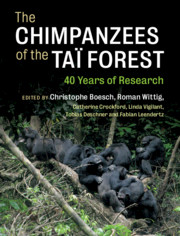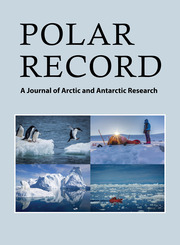The Monkeys of Stormy Mountain
The Arashiyama group of Japanese macaques holds a distinguished place in primatology as one of the longest continuously studied non-human primate populations in the world. The resulting long-term data provide a unique resource for researchers, allowing them to move beyond cross-sectional studies to tackle larger issues involving individual, matrilineal and group histories. This book presents an overview of the scope and magnitude of research topics and management efforts that have been conducted on this population for several decades, covering not only the original troop living around Kyoto, Japan, but also the two subgroups that were translocated to Texas, USA and Montreal, Canada. The chapters encompass topics including life history, sexual, social and cultural behaviour and ecology, giving an insight into the range of current primatological research. The contributors underscore the historic value of the Arashiyama macaques and showcase new and significant research findings that highlight their continuing importance to primatology.
- Provides a valuable overview of the most important topics in current primatology
- Details the history of research at Arashiyama, demonstrating the importance of long-term primatological studies
- Addresses the conservation status and management of the Arashiyama macaques
Reviews & endorsements
'Many of us who have worked with completely wild, nonprovisioned study populations like to think our data more closely reflect the natural ecology of our study animals, but the detail and depth of the studies carried out at the Arashiyama sites remain unmatched by those from more naturalistic sites. This volume shows how the Arashiyama monkeys have inspired and continue to enhance field research by primatologists around the world.' David S. Sprague, The Quarterly Review of Biology
Product details
January 2012Hardback
9780521761857
516 pages
234 × 158 × 28 mm
0.94kg
63 b/w illus. 36 tables
Available
Table of Contents
- List of contributors
- Foreword Masao Kawai
- Preface
- Introduction Michael A. Huffman, Paul L. Vasey and Jean-Baptiste Leca
- Part I. Historical Perspectives:
- 1. A brief historical timeline of research on the Arashiyama macaques Michael A. Huffman, Linda M. Fedigan, Paul L. Vasey and Jean-Baptiste Leca
- 2. In search of the phantom monkeys (originally published in 1975) Eiji Ohta, translated by Michael A. Huffman
- 3. Arashiyama monkeys in the late 1950s Yukimaru Sugiyama
- 4. Touches of humanity in monkey society (originally published in 1980) Naoki Koyama, translated by Michael A. Huffman
- 5. Fifty years of female macaque demography at Arashiyama, with special reference to long-lived females (>25 years) Alisa Chalmers, Michael A. Huffman, Naoki Koyama and Yukio Takahata
- Part II. Sexual Behaviour:
- 6. Long-term trends in the mating relationships of Japanese macaques at Arashiyama, Japan Michael A. Huffman and Yukio Takahata
- 7. Correlates between ovarian cycle phase and mating season behaviour in female Japanese macaques (Macaca fuscata) Ann O'Neill
- 8. Factors influencing mating frequency of male Japanese macaques (Macaca fuscata) at Arashiyama West Katharine M. Jack
- 9. Costs and benefits of old age reproduction in the Arashiyama West female Japanese macaques Mary S. M. Pavelka and Linda M. Fedigan
- 10. Is female homosexual behaviour in Japanese macaques really sexual? Paul L. Vasey and Doug P. VanderLaan
- Box essay. Male homosexual behaviour in Arashiyama Yuji Takenoshita
- 11. A theoretical model of the development and evolution of non-conceptive mounting behaviour in Japanese macaques Doug P. VanderLaan, Sergio M. Pellis and Paul L. Vasey
- 12. Male masturbation behaviour of Japanese macaques in Arashiyama E troop Eiji Inoue
- Part III. Cultural Behaviour, Social Interactions, and Ecology:
- 13. Thirty years of stone handling tradition in Arashiyama macaques: implications for cumulative culture and tool use in non-human primates Jean-Baptiste Leca, Noëlle Gunst and Michael A. Huffman
- 14. Social object play among juvenile Japanese macaques: comparison between the provisioned Arashiyama troop and the non-provisioned Kinkazan troop Masaki Shimada
- Box essay. Play fighting in Japanese macaques: a comparative perspective Sergio M. Pellis and Vivien C. Pellis
- Box essay. Eye-covering play in Japanese macaques and orangutans Anne Russon and Paul L. Vasey
- 15. Behavioural sequences involved in grooming interactions in adult female Japanese macaques: how do participants change roles and maintain interactions? Mariko Fujimoto
- Box essay. Dental flossing behaviour as a grooming-related innovation by a Japanese macaque Jean-Baptiste Leca
- 16. The impact of kinship, defence cost and priority of access on food competition in Japanese macaques Patrick Bélisle, Jean Prud'homme and Constance Dubuc
- 17. Plant-food diet of the Arashiyama Japanese macaques and its potential medicinal value Michael A. Huffman and Andrew J. J. MacIntosh
- Part IV. Management and Education:
- 18. Birth control in female Japanese macaques at Iwatayama Monkey Park, Arashiyama Keiko Shimizu
- 19. Importance of the Arashiyama Japanese macaques in science and environmental education Yuji Takenoshita and Yukiyo Maekawa
- Appendix. Bibliography of publications on the Arashiyama macaques
- Index.

